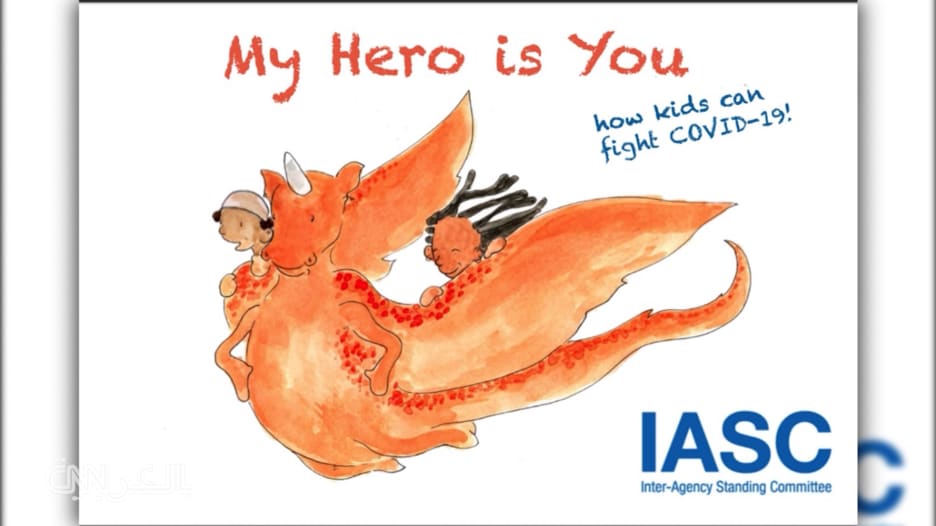دبي، الإمارات العربية المتحدة (CNN)-- مع اندلاع الاحتجاجات التي تكافح ضد العنصرية في الولايات المتحدة، يشعر الآباء والأمهات بالقلق.
ويخشى الآباء من البشرة السوداء على حياة أطفالهم عند القيام بأمور مثل ممارسة الركض، أو القيادة، أو حتى النوم في منازلهم، بينما يخشى الآباء من اصحاب البشرة البيضاء من أن يُصبح أطفالهم عنصريين.
ويمكن للأطفال الذين لا تتجاوز أعمارهم الـ3 أعوام التمييز بين الوجوه بحسب اللون، ويفهم الأطفال من عمر الـ3 أعوام الفئات العرقية، إضافة إلى التسلسلات التي تأتي معها.
وتكمن الحيلة في قبول أن هذا التصنيف طبيعي، ومنعه من أن يتحول إلى عنصرية.
وتدرس ماي لينغ هاليم، وهي أستاذة مساعدة في علم النفس في جامعة ولاية كاليفورنيا في "لونغ بيتش"، وسارة جايثر، وهي أستاذة مساعدة في علم النفس وعلم الأعصاب في جامعة "ديوك"، العرق، والجنس، وتطور الهوية، والنمطية، والتصورات الاجتماعية.
وبالتعاون مع آخرين من جامعات أخرى، باشرتا في دراسة ممولة من مؤسسة العلوم الوطنية، تنظر إلى التحيزات العنصرية والجنسانية لدى أطفال في مجموعات عرقية مختلفة عبر 5 مناطق جغرافية، بهدف التعلم عن كيفية تأثير الثقافة على التحيز.
لماذا يفضل الأطفال الأشخاص الذين يشبهونهم؟
ويعني التحيز ضمن المجموعات تفضيل أحد الأفراد للأشخاص الذين يشبهونه، أو الأشخاص المماثلين له بطرق أخرى. ويظهر هذا التحيز عبر "مواقفنا، ومدى الإيجابية التي نشعر بها تجاههم، وتخصيص الموارد، أو السمات والقوالب النمطية التي يتعلمها الأطفال"، بحسب ما ذكرته جايثر.
ويعكس ذلك جزئياً التطور المعرفي لدى الأطفال، إذ أوضحت هاليم أننا بحاجة إلى تصنيف الأشخاص والأشياء، لأن ذلك أسهل للدماغ بدلاً من النظر لكل شخص كفرد.
متى يتحول التعرف على الاختلافات بين الأشخاص إلى عنصرية؟
ولا تعتقد جايثر أن الأطفال يولدون مع سمة العنصرية، وبدلاً من ذلك، يولد الأطفال في عالم تتواجد فيه العنصرية النظامية، وفي ثقافة تحتضن سلوكيات وأيديولوجيات عنصرية، و"تتسرب تلك الأيديولوجيات إلى كل شيء"، بحسب تعبيرها.
ويمكن للأطفال تعلم السلوك العنصري من الأهل، والمدارس، ووسائل الإعلام، وثقافة المجتمع.
وتتحول العنصرية المؤسسية إلى تحيزنا الشخصي، وذلك لكونها متجذرة وتلقائية جداً، ولكونها مقبولة جداً دون وجود عدد كاف من الأشخاص الذين يرغبون في إحداث تغيير حقيقي وطويل الأمد.
كيف يمكننا منع أطفالنا من أن يتحولوا لعنصريين؟
ويُعد الحديث عن العِرق أول خطوة لمنع أطفالنا من التحول لأفراد عنصريين.
وأشارت جايثر إلى أنه ليس لدينا الخبرة في التحدث عن الأشياء التي بُنيت لتكون "مخيفة" مثل العِرق، فهو أمر لا نتحدث عنه عادةً.
وقالت جايثر: "لا ينبغي علينا تأييد أيديولوجية عمى الألوان بأي شكل"، بل يجب أن نعترف بماهية العِرق في بلادنا والاعتراف بالسلالات التاريخية التي تأتي مع كون المرء من عِرق مختلف.
ولكن لا يكفي ذلك فحسب، وفقاً لما قالته جايثر، بل يجب علينا أيضاً تفكيك تلك الروابط السلبية والتلقائية التي نفكر بها عندما يأتي الأمر للمجموعات العرقية التي تختلف عن المجموعة التي ننتمي إليها.
ومن المهم أن يكون للأهل أصدقاء من أعراق مختلفة، وأشارت جايثر إلى بحث عن الأطفال يُظهر أن التركيب العِرقي لشبكة الأصدقاء الخاصة بالوالدين مؤشر على السلوكيات العرقية التي سينتهي الطفل معها في المستقبل.
إلى جانب ذلك، أضافت جايثر أهمية انتباه الأهل لسلوكياتهم غير اللفظية، واللغة الجسدية التي نُظهرها في سياقات مختلفة بدون إدراك ذلك في الغالب.
ومن المهم أيضاً أن نتذكر أنه يمكن أن يكون للمجموعات العِرقية الأخرى أيضاً تحيزات، ويمكن أن يكون للآسيويين واللاتينيين تحيزات ضد السود، بحسب ما ذكرته هاليم.
وأضافت هاليم أنه إذا كنا ننتمي إلى مجموعات أخرى تتعرض للتمييز، "فقد يكون من المفيد أيضاً التفكير في التجارب التي خضناها مع التمييز أيضاً، وذلك لفهم تجارب المجموعات الأخرى مع التمييز".







